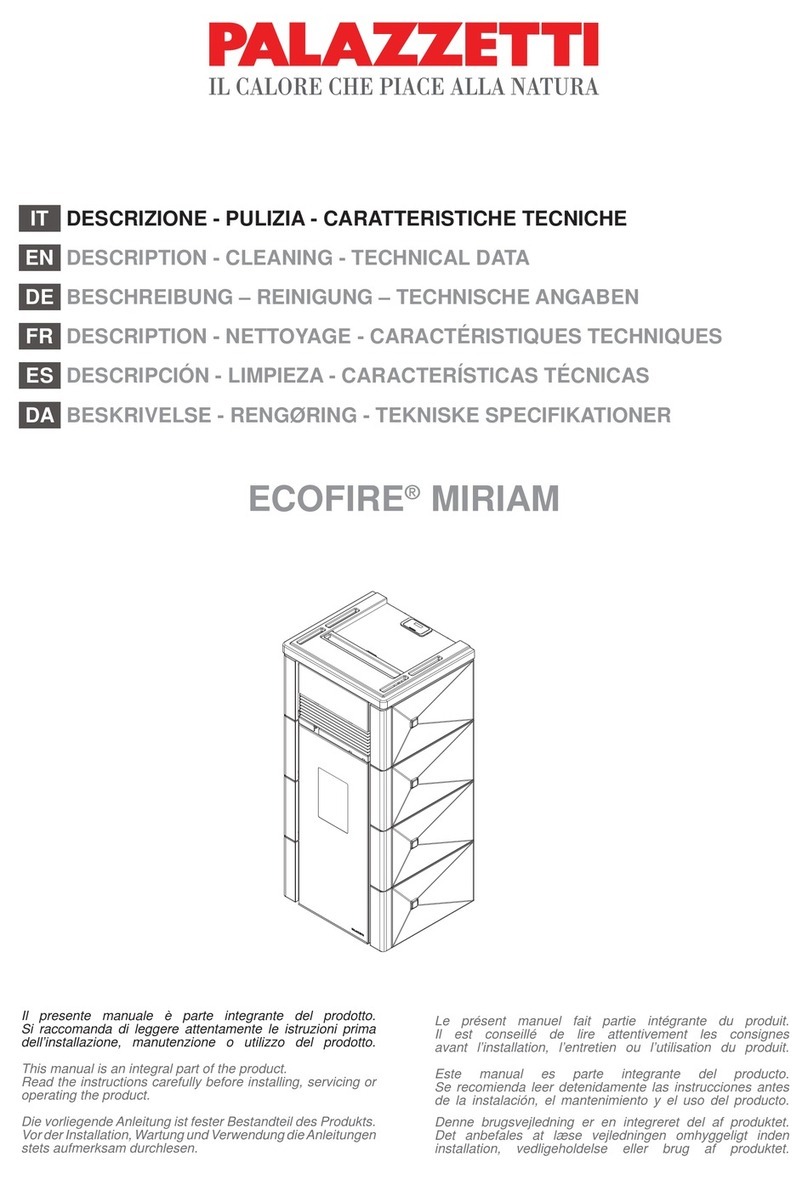Page 4
TableOfContents
I. SAFETY FIRST!!! .................................................................................................................................5
II. INSTALLATION ..................................................................................................................................7
1. Clearance to Combustibles ........................................................................................................7
1.1 Installation Clearances ......................................................................................................7
1.2 Other Clearances and Recommendations .........................................................................9
2. Electrical Requirements .......................................................................................................... 10
3. Fuel Requirements .................................................................................................................... 10
3.1 Physical Properties ....................................................................................................... 10
3.2 Fuel Storage ................................................................................................................... 10
4. Location of the Heater ............................................................................................................. 11
5. Typical Installation Configurations ...................................................................................... 11
6. Venting System .......................................................................................................................... 12
6.1 Exhaust Vent Pipe Requirements .................................................................................. 12
6.2 Exhaust Vent Termination Requirements ....................................................................... 13
6.3 Combustion Air Intake Requirements ........................................................................... 14
7. Mobile Home Additional Installation Requirements ........................................................... 15
7.1 Typical Mobile Home Installation Configuration ........................................................ 15
7.2 Recommendations for Mobile Home Installation ......................................................... 16
7.3 Mobile Home Combustion Air Intake Requirements ................................................... 16
7.4 Exhaust Vent Requirements ........................................................................................... 16
7.5 Other Mobile Home Installation Requirements ............................................................ 16
III. OPERATION.................................................................................................................................... 17
1. General overview ...................................................................................................................... 17
2. Safety features .......................................................................................................................... 18
3. Electric Igniter .......................................................................................................................... 18
4. MX2TMControl ....................................................................................................................... 18
4.1 Basic Description ..........................................................................................................18
4.2 “AUTO, HIGH/LOW, MANUAL Switch” .................................................................. 18
4.3 “ON/OFF” Button ........................................................................................................ 19
4.4 “HEAT SELECT” Button & Bar Graph........................................................................ 19
4.5 “AUGER” Button......................................................................................................... 19
4.6 “FAN” Button ...............................................................................................................20
4.7 “TRIM” Button ............................................................................................................. 20
4.8 Wall thermostat, wall switch or other switching device. ............................................. 20
4.9 Damper Control .............................................................................................................21
4.10 Starting (lighting) your Heater for the First Time ...................................................... 21
4.11 Starting (lighting) your Heater ................................................................................... 21
4.12 Stopping your Heater .................................................................................................. 22
4.13 Adjusting your Heater ................................................................................................ 22
IV. MAINTENANCE & CLEANING................................................................................................... 23
V. TROUBLE SHOOTING GUIDE......................................................................................................28
1. Trouble Shooting ...................................................................................................................... 28
2. Corrective Actions .................................................................................................................... 29
2.1 Proof Of Flame Failure ................................................................................................... 29
2.2 Pressure Switch Failure ................................................................................................ 29
2.3 Manual Reset Thermal Disk Failure .............................................................................. 29
2.4 Ignition Failure ............................................................................................................. 30
2.5 Overheating ................................................................................................................... 30
2.6 Lack of Air. .................................................................................................................... 30
2.7 Excess air. ...................................................................................................................... 31
VI. DIAGRAMSAND PARTS LIST ..................................................................................................... 32
1. KOZI MX2TM Control CircuitDiagram ............................................................................... 32
2. Stove Cross Section .................................................................................................................. 33
3. Equipment Compartment ........................................................................................................ 34
4. Parts List ................................................................................................................................... 36
VII. WARRANTY ................................................................................................................................... 37




























